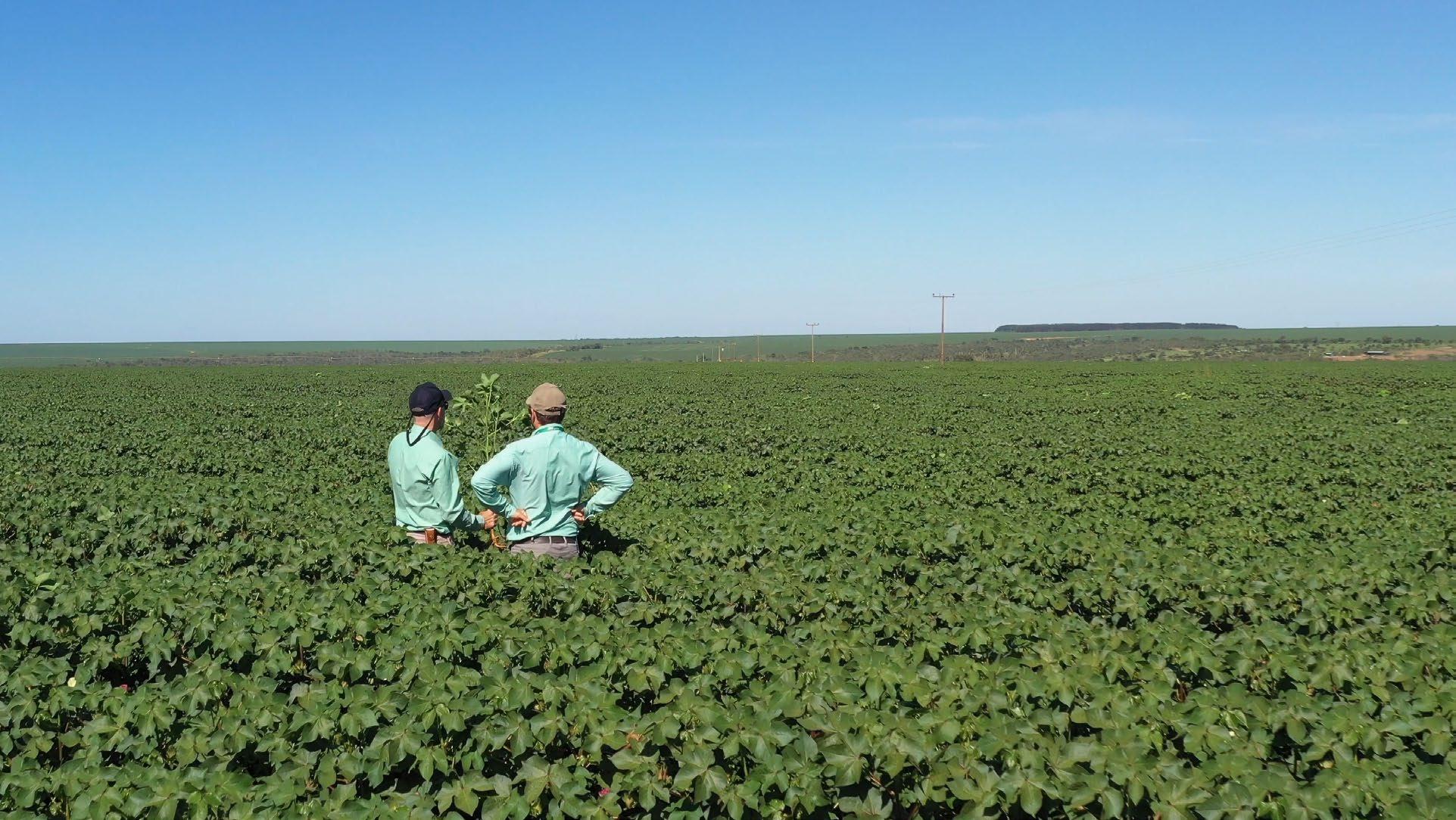
2022-23 Annual Report
Photo credit: Better Cotton/Carlos Rudiney
This Annual Report provides a reflection on the 2021-22 cotton season, the 2022-23 financial year, and general organisational developments spanning 2022 and the first quarter of 2023. It highlights field, market and organisational successes, challenges and opportunities. The report also contains key financial and governance information, aligned with Swiss GAAP reporting requirements.
Vision
A world where all cotton production is sustainable.
Mission
To help cotton communities survive and thrive, while protecting and restoring the environment.
Strategic Aims
• Embed sustainable farming practices and policies.
• Enhance well-being and economic development for cotton farming communities.

• Encourage and drive global demand for sustainable cotton.
Better Cotton is ISEAL Code Compliant. That means our system, including our assurance programme, has been independently evaluated against ISEAL’s Codes of Good Practice. For more information, see isealalliance.org. This Annual Report aligns with Swiss GAAP reporting requirements.
 Photo Credit: Better Cotton/Seun Adatsi.
Photo Credit: Better Cotton/Seun Adatsi.
Contents
A Message from the CEO
Some things got easier in 2022, like the ability to gather in person – we were grateful to reconvene the Better Cotton Conference in Malmo, Sweden, and enjoyed hosting other events. Yet devastating floods in Pakistan and other extreme weather patterns showed the importance of continuing to embed our improved Climate Approach and staying focused on innovative projects like the Traceability Solution.
Underpinning all of our efforts during this time was the latest revision of our Principles and Criteria (P&C). These are the farm level standard where our impact begins. They are of course a challenge – but they also present the opportunity to be ambitious in what Better Cotton Farmers can achieve. I have every confidence that the six principles of Management, Natural Resources, Crop Protection, Fibre Quality, Decent Work and Sustainable Livelihoods, supported by our cross-cutting priorities of Gender Equality and Climate Change Mitigation and Adaptation, will make great strides in deepening our impact and improving the future for farming communities.
The P&C will enable us, our partners, Better Cotton Farmers, and the wider sector to work towards the five Impact Targets we identified for our 2030 Strategy. With our targets we plan to help farmers improve soil health, reduce pesticide use and greenhouse gas emissions, empower women and add resiliency to smallholder livelihoods. These are big ambitions that have measurable outcomes to ensure we are achieving the impact we aim for.
One outcomes-based phrase we’ve been talking about a lot this past year has been “regenerative agriculture.”
There may not be consensus on the definition of regenerative agriculture, but it’s a hugely important part of our vocabulary nonetheless. Regenerative agriculture says that agriculture, including textile and food production, can give back to the land rather than just take from it. From improving soil health to empowering women in farming decisions, we’re putting regenerative agriculture at the heart of our sustainable practices.
And we continue to go far with those practices – in the 2021-22 season, 22% of global cotton production was Better Cotton, grown in 22 countries around the world. Our programmes reached 2.8 million farmers, which included more than 2.2 million Better Cotton licensed farmers.
At the end of 2022 , Uzbekistan became the latest country to launch a Better Cotton Programme. The world’s sixth-largest cotton producing country, Uzbekistan has had a challenging history in the sector. But after a lengthy pilot programme and an International Labour Organization finding that Uzbek cotton is free from systemic child labour and forced labour, we are very pleased to have Better Cotton in Uzbekistan. With strong multi-stakeholder engagement, we can continue to build on this positive change.
Big ambitions come with the need for hard data, strong reporting and a clear line of sight to what we are accomplishing at field level and throughout the cotton industry.
I was very proud for Better Cotton to work with ISEAL and cross-sector partners to develop the Delta
Framework, an aligned set of environmental, social and economic indicators to measure sustainability across the cotton and coffee commodity sectors. We’ve since launched our own improved impact reporting model that better evidences trends over time in Better Cotton farming.
To top all this off, we’ve been working on a Traceability Solution that will launch in November 2023 after three years of preparatory work. We revised our Chain of Custody model during 2022, published this year, and it won’t be long before the question “Where does your cotton come from?” has a clear answer in every physical Better Cotton garment.
It’s an exciting time at Better Cotton, and as always, I must thank farm communities around the globe, our members, partners, donors and the entire Better Cotton team for your unceasing efforts to deliver a world where all cotton is sustainable. It is your commitment and innovation that keeps us at the forefront of building a sustainable and regenerative future that will benefit both people and planet.
Alan McClay Chief Executive Officer, Better
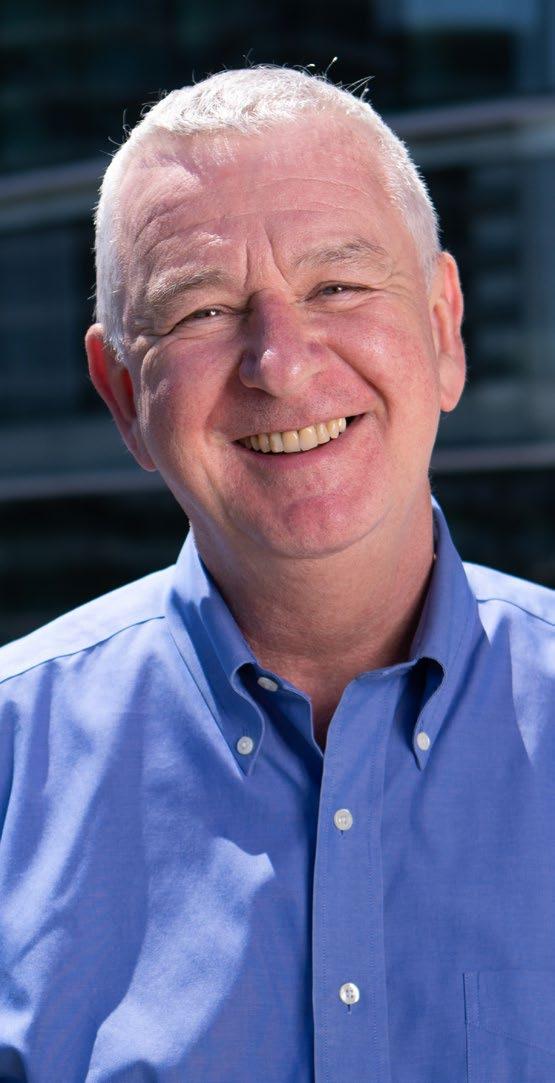
4
Cotton
We never want to be an organisation that talks about impact without being able to back it up with data.
Photo: Alan McClay © Jay Louvion
Year in Review: Events
Bringing Stakeholders Together to Share and Learn
At Better Cotton, we know that to accelerate progress it is crucial to come together to share knowledge and insights. In 2022 and 2023, we had several opportunities to unite Better Cotton stakeholders from across the cotton sector — from fashion brands and scientists to farmers and civil society organisations. Explore some of the highlights from these events below.
Better Cotton Conference 2022 | Malmö, Sweden and Online

After several years away from in-person events, the Better Cotton Conference on 22 and 23 June 2022 was a big success. In total, we welcomed more than 450 participants from 50 countries to examine the overarching theme of climate action through a variety of lenses, including gender, smallholder livelihoods, traceability, sustainable finance and more.
Here were some of the key moments:
• Drawing on the first ever global analysis of physical climate risks across global cotton growing regions for the 2040s conducted for the Cotton 2040 initiative, Forum for the Future’s Charlene Collison spoke to Climate Scientist, Iain Watt on understanding the risks and the implications for future production.
• Balubhai Parmar, a Better Cotton Farmer from India, gave us a first-hand look at how collaboration between farmers can bring about improvements in yields and livelihoods.
• Meanwhile Lacy Vardeman, a Better Cotton Farmer from the United States, shared her experience of multi-generational farming in the large farm context and learning and trialling locally relevant approaches.
• Head of Sustainability at IKEA, Christina Niemelä Ström, spoke about their commitment to people and planet, and the progress they have made to source their raw materials in a more sustainable, climate positive way.
• Plus, much more!
• Watch a showreel from the event.
5
Photo Credit: Better Cotton/Altitude Meetings Better Cotton Conference 2022, Malmö
Programme Partner Symposium | Phuket, Thailand
From 6-8 February 2023, Better Cotton held the first symposium for Programme Partners in three years in Phuket, Thailand. The meeting brought together 130 participants from 11 cotton producing countries to inspire progress, share best practices for implementing the Better Cotton Principles and Criteria and to update partners on new initiatives.

The twin themes of the meeting were climate change and smallholder livelihoods with external speakers covering
topics such as women and climate, farm level mitigation and adaptation practices, lessons learned from sustainable rice production in Thailand and using technology to support smallholder farmers.
A highlight of the event was the ‘Innovations Marketplace’ — a space for partners to showcase their cutting-edge tools and practices that have greatly impacted and shaped farmers growing Better Cotton.
Learn more about the event.
Multi-Stakeholder West Africa Event | Abidjan, Côte d’Ivoire
On 28 March 2023, Better Cotton hosted a multistakeholder event in Abidjan, Cote D’Ivoire to explore the potential for new programmes and partnerships across West and Central Africa.

The event enabled key stakeholders across the region to share their experiences and perspectives on the future of sustainable cotton production on the continent amidst a rapidly changing climate. Delegates also had the opportunity to learn more about the Better Cotton Programme and longterm ambitions that underpin our 2030 Strategy.
Representatives from leading cotton companies and organisations including Solidaridad, The Sustainable Trade Initiative [IDH], ECOM, OlamAgri, APROCOT-CI, amongst several others, participated in discussions to explore opportunities and challenges regarding sustainability in the cotton sector as well as engaging with stakeholders from the cocoa sector for cross-commodity learnings.
Learn more about the event.
6
“The event was an important opportunity for cotton stakeholders in Africa to engage with one another and explore partnerships needed to ensure market access and improved sustainability for cotton growers.”
Damien Sanfilippo, Senior Director of Programmes, Better Cotton
Photo Credit: Better Cotton/Eugénie Bacher. Programme Partner Meeting, Phuket
Photo Credit: Better Cotton Multi-Stakeholder West Africa Event, Abidjan
Field and Market Results
The field-level data presented in this section of the report is accurate as of the 2021-22 cotton season (July 2021 –August 2022).
The membership and Better Cotton sourcing data is accurate as of the end of the 2022 calendar year.
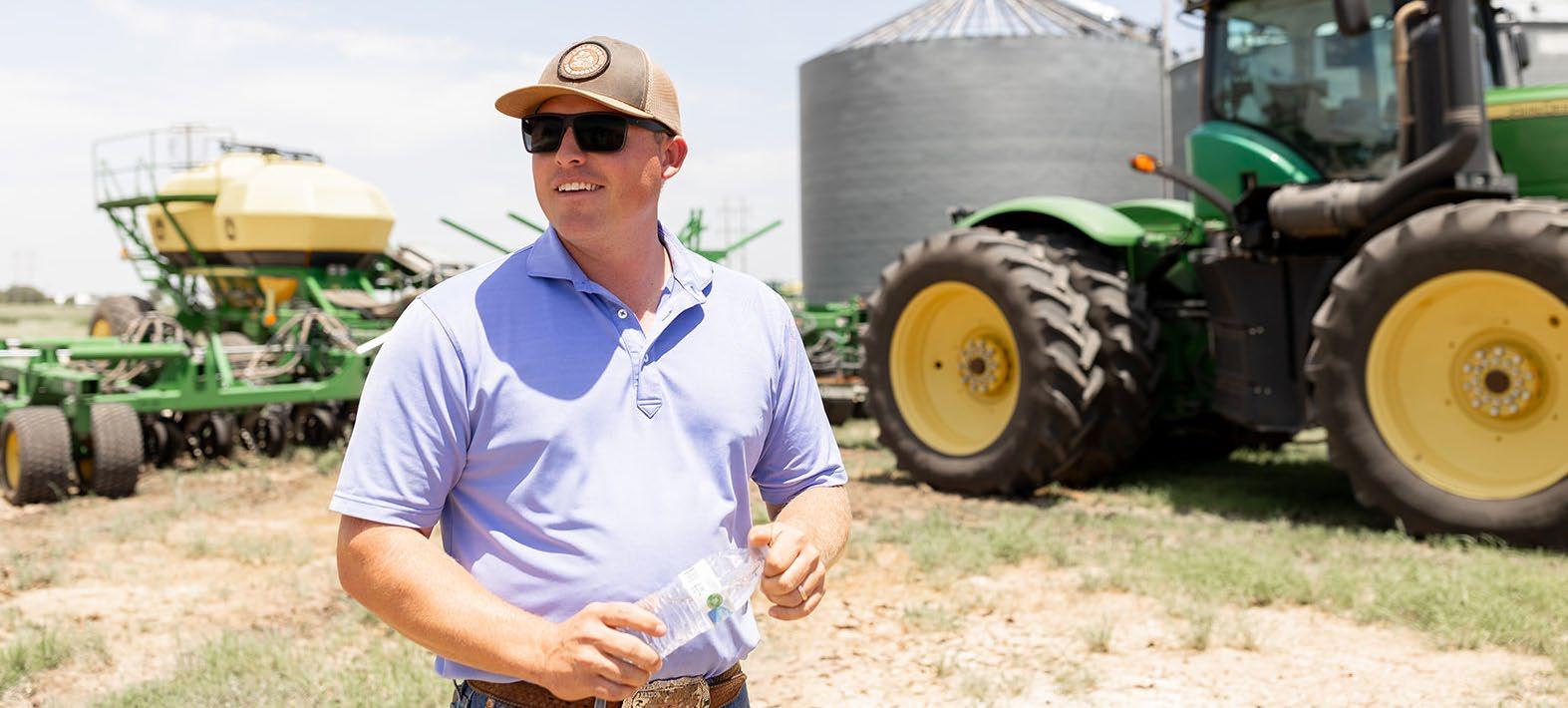 Photo Credit: Better Cotton/Katrina McArdle
Photo Credit: Better Cotton/Katrina McArdle
Field Results: 2021-22 Season
In the 2021-22 cotton season, Better Cotton worked with close to 60 partner organisations to deliver training and support to just over 2.8 million (2,806,605) farmers in 22 countries
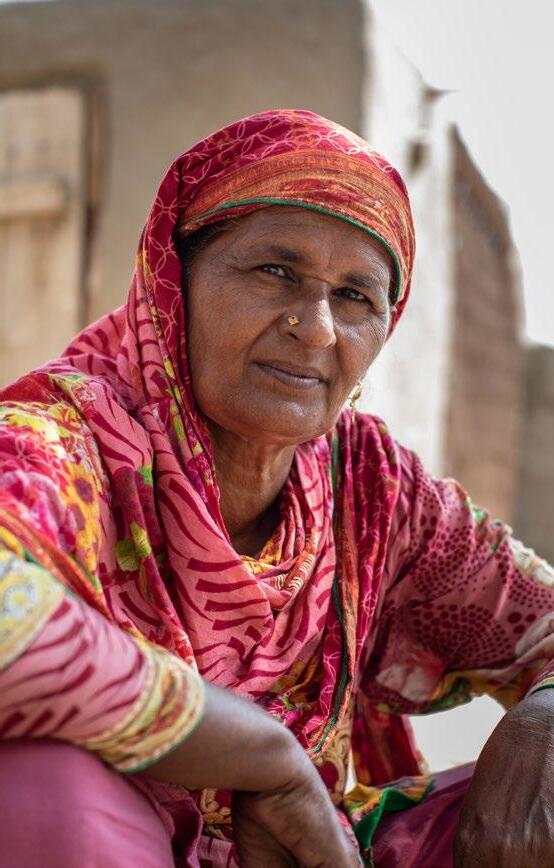
In the 2021-22 cotton season, out of the 2.8 million farmers who received training, more than 2.2 million received a license to sell their cotton as Better Cotton and produced 5.4 million (5,414,111) tonnes of Better Cotton
This represents around 22% of global cotton production This is a 15% increase on the 2020-21 season production volumes.
22% of global cotton production is Better Cotton
25,176,000MT
Global cotton production*
Type Country
Better Cotton Direct Programme Countries
China
Egypt
India
Kazakhstan
Mali
Mozambique
Pakistan
South Africa
Tajikistan
Turkey
United States
Sub-Total 11
Benchmarked Countries
5,414,111MT
Better Cotton production
Australia
Brazil
Greece
Israel
Sub-Total 4
Cotton Made in Africa
15% increase on the 2020-21 season production volumes
2.2 million
Licensensed Better Cotton Farmers
Benin
Burkina Faso
Cameroon
Cote d’Ivoire
Mozambique
Nigeria
Tanzania
Zambia
Sub-Total 7 (excluding Mozambique, which is not double counted)
TOTAL 22
Photo Credit: Better Cotton/Khaula Jamil *ICAC
2021-22 Season Data
Volume of Better Cotton Grown (Metric Tonnes)
Total Better Cotton Produced
5.4
MILLION METRIC TONNES
1 Better Cotton recognised equivalent standards.
2 The CmiA countries in the 2020-21 season include: Benin, Burkina Faso, Cameroon, Chad, Cote d’Ivoire, Ghana, Mozambique (farmers in Mozambique which are both CmiA and Better Cotton licensed are only counted once.), Nigeria, Tanzania, Uganda, Zambia.
3 Madagascar’s only Producer Unit did not earn a Better Cotton license in the 2019-20 & 2020-21 seasons, hence the figure for production is zero.
Please note that the Better Cotton production volume for Pakistan is an estimate – this is due to Covid-19-related verification challenges and some data quality issues. The figure has been estimated based on previous season production volumes and volumes sourced.
9
USA (MyBMP) Pakistan 817,840 MT (MyBMP) Egypt 2,413 MT (MyBMP) Turkey 67,381 MT (MyBMP) USA 305,440 MT (MyBMP) Brazil (ABR)1 1,977,553 MT (MyBMP) Israel (ICPSS) 5,166 MT (MyBMP) Greece (AGRO-2) 54,256 MT (MyBMP) Tajikistan 13,446 MT China 99,307 MT (MyBMP) India 863,480 MT (MyBMP) Australia (myBMP)1 382,262 MT (MyBMP) Africa (CmiA)2 632,257 MT (MyBMP) South Africa 7,907 MT (MyBMP) Mozambique 6,617 MT (MyBMP) Mali 174,726 MT (MyBMP) Kazakhstan 4,059 MT 9
2021-22 Season Data
Better Cotton Licensed Farmers Around the World
10
MILLION
2.2
Total Farmers Licensed
1 Better Cotton recognised equivalent standards.
2 The CmiA countries in the 2020-21 season include: Benin, Burkina Faso, Cameroon, Chad, Cote d’Ivoire, Mozambique (farmers in Mozambique which are both CmiA and Better Cotton licensed are only counted once.), Nigeria, Tanzania, Uganda, Zambia.
(MyBMP) Pakistan 510,327 India 908,375 Africa (CmiA)2 570,740 South Africa 808 Mozambique 55,907 (MyBMP) Mali 114,500 Australia (myBMP)1 131 USA 327 Brazil (ABR)1 370 (MyBMP) (MyBMP) (MyBMP) Turkey 2,018 Israel (ICPSS)1 39 Greece (AGRO-2)1 21 Egypt 3,589 Tajikistan 1,095 Kazakhstan 507 China 107,180 (MyBMP) 10
3 Madagascar’s only Producer Unit did not earn a Better Cotton license in the 2019-20 & 2020-21 seasons, hence the figure for production is zero.
Highlights and Challenges from Selected Countries Better Cotton Programme
Better Cotton production and uptake increased from the 2020-21 season. The number of countries with Better Cotton licensed farmers decreased slightly from 24 to 22, with the ending of the programme in Madagascar, and Chad no longer part of the CmiA programme.
Australia
Australia made a strong recovery from drought, and combined with an increase in land cultivated, the country more than doubled its production from the previous season (to 382,262 MT in the 2021-22 season).
Egypt
Egypt officially became a new Better Cotton Programme country in 2020. For the 2021-22 season, the increasing figures, including doubling its Better Cotton production, are due mainly to the successful completion of the first season and expansion of the project, and lower pest infestation, among other reasons.

Mali
The 2020-21 season was a difficult year for cotton farmers owing to a farmers’ boycott throughout the country over farm gate prices, and due to a decrease in the seed cotton price, increases in various agricultural products costs and other internal issues. A jump in farmer numbers is due to increases in Better Cotton coverage to 100% for some Producer Units, changes in the internal management of the cotton sector, an increase in cotton prices, reduced agricultural products prices and government-led incentivised cotton production.
Pakistan
Climate change and natural disasters will continue to affect cotton farmers across the globe. In Pakistan in summer 2022, devastating floods put a sixth of the country under water and affected 30 million people. Farmers experienced significant impacts due to flood water and/or flash floods. Ginners located in flood-affected areas were forced to close, and other ginners were running factories with limited capacity.
South Africa
Large Farms and one producer unit of Medium Farmers, which use modern technology and have higher yields, left the programme in the 2021-22 season. However, several smallholders joined the program during the same time. This led to a decrease in estimated cultivated area and cotton production, while the number of farmers increased . Note that in September 2023, a temporary suspension of the programme in South Africa was jointly announced by Better Cotton and Cotton SA.
Mozambique
In the 2020-21 season the rain started on time/early (November to January) for sowing and the rain was more regular through the season. This enabled some farmers (particularly those working with the Programme Partner, SAN
11
Photo credit: Better Cotton / Carlos Rudiney
JFS) to have good levels of production. However, in 202122 there was less rain or even drought in some areas, and farmers had to sow until late February as the rain coming in was not enough for germination. Without sufficient rainfall, some pests are more prevalent and can cause more damage, especially the suckers (aphids and jassids) which have been a problem in the last three cropping seasons.
USA
In 2021, severe multi-year drought in the West continued to hurt producers from California to Texas, but high cotton prices had many growers celebrating. Planned field days were cancelled as Covid continued to keep us from meeting in large groups. A second year of research with the University of Arkansas and Agricenter International compared soil properties on plots with conventional practices and those with regenerative practices.
The US team continued to navigate the world of virtual communication with training videos and individual farmer data snapshots. The inaugural Large Farm Symposium brought together 100 farmers and partners from six continents to talk about how Better Cotton’s principles are being put into action on large-scale farms.
Uzbekistan
We launched a new Better Cotton Programme in Uzbekistan, the sixth largest cotton-producer in the world. We are invigorated to improve sustainability and decent work in the country, while we recognise the challenges involved against the backdrop of the sector’s history.
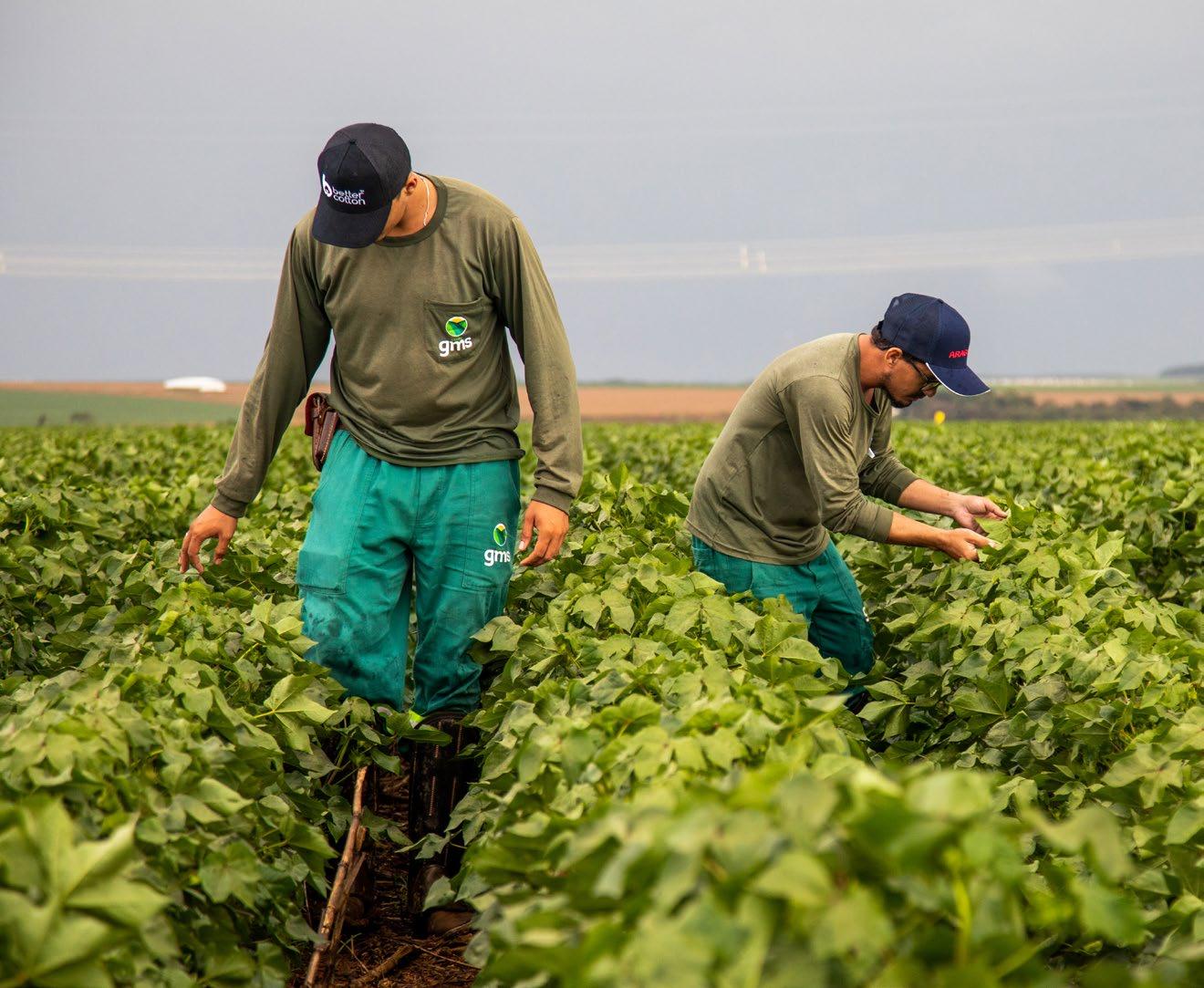
12
Photo credit: Better Cotton / Carlos Rudiney
2010-22 Annual Data

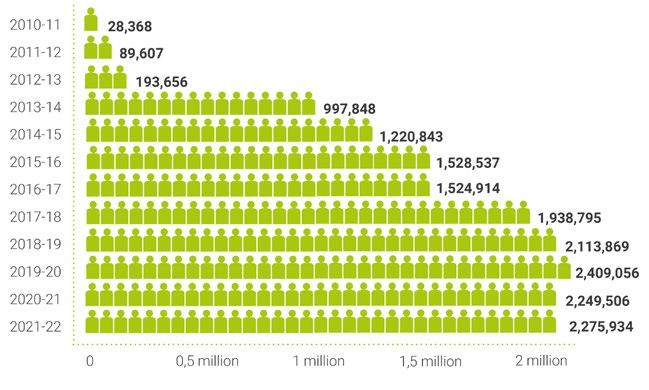
2010-11 to 2021-22 Licensed Better Cotton Farmers
2010-11 to 2021-22 Volumes of Better Cotton Grown

13
Photo Credit: Better Cotton/Eugénie Bacher
Market Results: Membership
The membership of Better Cotton is a multi-stakeholder, global network of organisations that touches all areas of the cotton sector. In 2022, our network continued to grow, and we were pleased to welcome more than 370 new members – ending the year at 2,563 total members. This represents a 6% increase on the previous year.
A 12% increase in the number of non-member suppliers – including ginners, traders, spinners, fabric mills, garment and end-product manufacturers, and sourcing agents – using the Better Cotton Platform – took the total number of suppliers using the platform to beyond 10,000 for the first time, with a year-end total of 11,234.
Find out more about becoming a Better Cotton Member.
“We are delighted to see that, even in a challenging global environment, businesses and organisations from all areas of the cotton sector continue to join Better Cotton’s network and commit to supporting our work to ensure that cotton can be more sustainable.”
Membership 2022
325 RETAILERS AND BRANDS
2,171 SUPPLIERS AND MANUFACTURERS
34 CIVIL SOCIETY
16 ASSOCIATES 17 PRODUCER ORGANISATIONS
+370 New Members in 2022
Total Members
2,563
at end of 2022 Find all members here
Non-Member BCP Suppliers
48 2021 2,563 2022 14
Membership 2010-2022 986 2016
2,409 2010
110 2011
197 2012
313 2013
468 2014
706 2015
1,433 2018
1,842 2019 2020
2,108 *This graph shows the net amount of members at the end of the calendar year.
WHAT IS
THE BETTER COTTON PLATFORM?
The Better Cotton Platform (BCP) is our proprietary online system used by members and non-member suppliers to document volumes of cotton sourced as ‘Better Cotton’ as they pass through the supply chain. Access to the BCP allows organisations to participate in the
Better Cotton Chain of Custody by recording information about cotton-containing orders sourced as Better Cotton, managing the required documentation and recording information about relevant sales to customers.
14
11,234 12% increase from 2021 Membership growth by category* Suppliers and Manufacturers Associate Members Civil Society Producer Organisations Retailers and Brands 1,199 2017
Paula Lum Young-Bautil, Director of Membership & Supply Chain, Better Cotton
Market Results: Sourcing
Better Cotton is a multi-stakeholder organisation, and all organisations within our membership contribute in different ways to making more sustainable cotton a reality. In particular, Retailer and Brand Members play a crucial role when they commit to increased sourcing of more sustainable cotton. In 2022, 260 Retailer and Brand Members collectively sourced 2.6 million tonnes of Better Cotton – an increase of 7% on the year before. This represents over 10% of cotton produced globally.
However, uptake of Better Cotton by spinners in membership dropped by 7% in comparison to 2021 levels. Better Cotton trading patterns mirror those of the global cotton trade, and according to the USDA Cotton Outlook, mill cotton consumption overall was affected by slowed global demand, a trend which continues into 2023. Consumer spending was reduced due to high inflation indirectly impacting consumption, and mill consumption was directly impacted by a significant increase in cotton prices, and spinning mills experienced lower profit margins.
India, a major consumer of cotton, saw consumption drop as cotton margins decreased. Its competitiveness also declined due to a number of factors including decreasing exports as issues like higher spot pricing for yarn was observed giving rise to unfavourable yarn prices.
Pakistan saw its lowest mill consumption in recent times due to supply challenges and financial constraints.
Retailer & Brand Member
Better Cotton Uptake by Retailer & Brand Members 2013-2022
Spinner Member
15
2.6 10% Accounts for GLOBAL COTTON PRODUCTION 7% Increase of ON 2021
Uptake 2022
Uptake 2022
3.4 461,000 MT 2016 736,000 MT 2017 1,100,000 MT 2018 1,500,000 MT 2019 1,700,000 MT 2020 2,500,000 MT 2021 251,000 MT 2015 117,000 MT 2014 85,000 MT 2013
Million Tonnes
Million Tonnes of Better
Sourced 2,600,000 MT 2022 7% Decrease of ON 2021
of Better Cotton Sourced
Cotton
Year in Review: Launching our Impact Targets
In December 2021, we published the Better Cotton 2030 Strategy — our roadmap to generating deeper impact across the cotton sector.
As part of the 2030 Strategy, we also developed Impact Targets spanning soil health, women’s empowerment, pesticides, sustainable livelihoods and climate change mitigation to help guide our journey forward and enable progress to be clearly measured and communicated.
With the first target (climate change mitigation) launched with the 2030 Strategy, Better Cotton set about formulating the remaining four targets, which launched in 2023.
These targets are aligned with the UN’s Sustainable Development Goals and will help us drive change across all facets of cotton production. They are also inherently linked, with improvements in one felt across others.
Five Impact Targets to Drive Meaningful Change
Climate Change Mitigation Target: Reduce greenhouse gas emissions by 50% from the 2017 baseline per tonne of Better Cotton lint produced by the end of the decade.
To achieve this, we will support farmers to implement climate-smart and regenerative agricultural practices that reduce emissions, sequester carbon and improve soil health, such as cover cropping, reduced tillage, crop rotation and agroforestry.
Soil Health Target: Ensure 100% of Better Cotton Farmers have improved the health of their soil.


Soil is quite literally the foundation of cotton farming, yet a third of the world’s soils have deteriorated at the hands of erosion and contamination. This target outlines our approach to helping Better Cotton Farmers implement soil management plans and Integrated Pest Management techniques that can reduce their reliance on synthetic pesticides and fertilisers, maintain and enhance soil structure and fertility, boost their yields — and ultimately — make their soil a carbon sink .
Women’s Empowerment Target: Reach one million women in cotton with programmes and resources that promote equal farm decision-making, build climate resilience or support improved livelihoods. And ensure 25% of Better Cotton Field Staff are women with the power to influence sustainable cotton production.

Our Women’s Empowerment target is focused on improving inclusion within the Better Cotton Programme, as women are often side-lined away from decisionmaking. We aim to work in partnership with women’s rights and women-centred organisations to improve women’s access to resources, support the growth of women’s groups and producer organisations and mainstream women’s empowerment initiatives to promote equal farm decision-making, build climate resilience and support improved livelihoods.
Organizing for Change in Agriculture and Natural Resource Management

16
“Organisations like Better Cotton can be catalysts to advance gender equality in the cotton sector. Better Cotton’s vast network touches millions of farmers around the world and this infrastructure will be important to driving changes at the field level. Better Cotton’s Women’s Empowerment Impact Target will serve an important purpose to the sector if we’re to see women afforded the chances that have historically been set aside for men.”
Photo credit: Better
16
Nisha Onta, Regional Coordinator for Asia at Women
Cotton/Carlos Rudiney
Pesticides Target: Reduce the use and risk of synthetic pesticides applied by Better Cotton Farmers and workers by at least 50%.
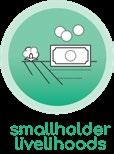
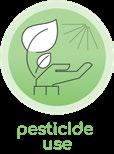
According to the Pesticide Action Network (PAN) UK, cotton uses more pesticides and insecticides than any other single major crop. There are also a number of Highly Hazardous Pesticides (HHPs) — pesticides acknowledged to present particularly high levels of acute or chronic toxicity to health or the environment — widely used on cotton farms. Through this target, Better Cotton aims to substantially reduce the volume of HHPs and synthetic pesticides used by 2030. To do this, we are heavily promoting locally appropriate regenerative soil management practices, such as biopesticides or traps, as the first choice and conventional pesticides as a last resort.
Sustainable Livelihoods Target: By 2030, sustainably increase the net income and resilience of two million cotton farmers and workers.
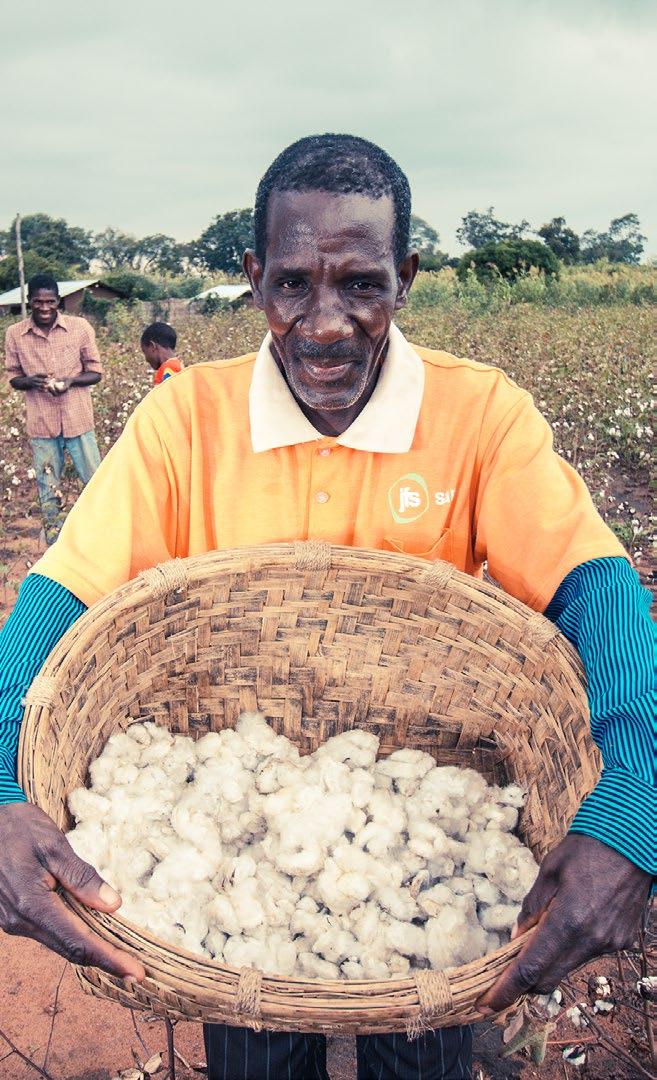
The overarching aim of all that we do is to support farmers, workers and their wider communities to build more sustainable livelihoods. If they can’t meet their basic needs with a living income, it will be difficult for them to focus on improving their agricultural practices. This target underlines our focus to help farmers develop more robust income streams and strong management practices that can help build their resilience to the inevitable uncertainties of cotton production.
In the spirit of continuous improvement that underpins our organisation, these progressive new targets will provide us with valuable metrics to help ensure greater lasting and demonstrable economic, environmental and social benefits at the farm level for cotton growing communities by 2030.
“Pesticides are driving climate change directly and are likely to account for 7-10% of Better Cotton’s greenhouse gas emissions. Globally, more pest control is provided by nature than by pesticides. Farming with nature, not against it, through adopting best practices will help farmers reduce pesticide use and improve their resilience to the extreme conditions brought by climate change.”
Rajan Bhopal, International Project Manager at PAN UK
“With the scale that Better Cotton brings, this new target can potentially lead to a higher income for a lot of farmers around the world, which is the first step towards a living income.”
Tamar Hoek, Better Cotton Council Member and Solidaridad’s Senior Policy Director for Sustainable Fashion
17
Photo: Better Cotton/ Paulo Escudeiro
Year in Review: Bringing our Traceability Solution to Life
‘Where does your cotton come from?’ has long been a difficult question for retailers to answer. Cotton is one of the most extensively traded commodities in the world and has a highly complex value chain that can vary hugely depending on local contexts. As a result, tracing cotton back to its source presents a wide range of challenges. But as stakeholders worldwide seek more clarity over the social and environmental challenges associated with textile supply chains and policymakers increasingly require businesses to demonstrate greater transparency, traceability is no longer a ‘nice-to-have’. At the end of 2023, Better Cotton is set to launch a new traceability solution that can help our members address these concerns.
How Our Traceability Solution Came to Life
In 2020 we took advantage of advances in technology and increasingly stringent consumer and governmental expectations to revisit the means to bring traceability back into the Better Cotton value chain. One year later, Better Cotton convened a group of top industry players, drawn from Better Cotton’s Retailer and Brand Members, to lead the way in creating a traceability solution that could catalyse progress across the sector .
The result of all this groundwork was a four-phased plan to bring a Better Cotton Traceability Solution — and physical, traceable Better Cotton — to fruition. Our top priority was to find ways to create a solution that balances what consumers want (in terms of traceability) with what
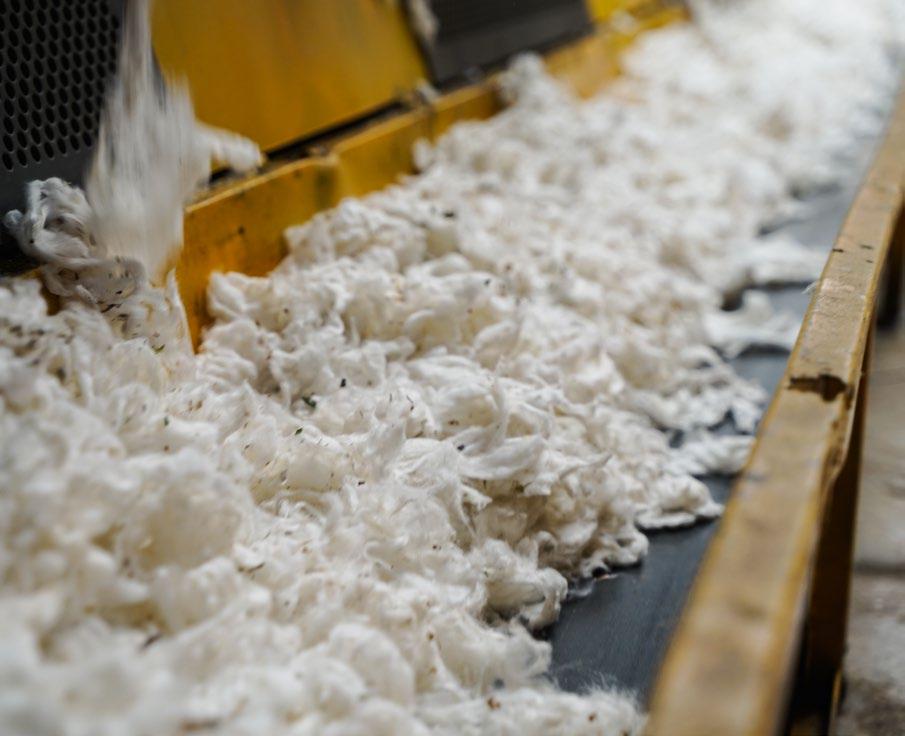
farmers need (in terms of a well-functioning market).
In April 2022, we brought another panel of Retailer and Brand Members together for the second phase — testing and enabling the delivery of new, viable traceability solutions. The panel raised an initial £1m in investment which helped fund the development of our approach, including two independent research studies and a survey of over 1,500 Better Cotton Suppliers who made it clear that traceability is business-critical across the industry.
Revising Better Cotton’s Chain of Custody Model
By October 2022, we were ready to revise Better Cotton’s Chain of Custody (CoC) model — the documentation and evidence of Better Cotton as it moves through the supply chain. A Chain of Custody Task Force comprised of Better Cotton Members from across the supply chain examined and recommended changes to version 1.4 of the CoC Guidelines.
Among other proposed changes, the draft introduced three new traceability models in addition to mass balance:
• Segregation (Single Country)
• Segregation (Multi-Country)
• Controlled Blending [the mixing of a known amount of Better Cotton with conventional cotton]
18
Photo Credit: Better Cotton/Eugénie Bacher
Better Cotton Members had the opportunity to share their feedback on the proposed new CoC standard during a public consultation process held in November 2022.
This resulted in the publication of a new version of the guidelines, called the CoC Standard v1.0. The three new proposed CoC models were approved, meaning Better Cotton Members can soon trace physical Better Cotton alongside our foundational mass balance model. The new CoC Standard v1.0 will allow organisations to apply different CoC models depending on how they operate and the needs of their customers.
Piloting Better Cotton Traceability in India

To test these new models, we launched a pilot project in India in October 2022. Our goals were to understand better the impact of implementing a segregation CoC model, digital traceability activities as well as additive tracer technologies (to mark and trace Better Cotton physically) within cotton supply chains throughout the country. India was selected as it is one of the largest producers of Better Cotton globally and amongst the most complex supply chain contexts Better Cotton flows through.
First insights from the pilot are already informing our strategies for implementing traceability at scale in India and more widely — from the optimum time to engage and train suppliers to how to mitigate operational challenges they may face.
As we continue to hone our Traceability Solution, we look forward to offering our Retailer and Brand Members the opportunity to source physical Better Cotton and verify the country of origin of the physical Better Cotton within their products. Better information about individual farmers will also make it possible to explore direct payments, preferential financing and other tailored forms of support to reward farmers for improving the sustainability of their farms — ultimately helping cotton farming communities thrive around the world.
Next Steps
Implementation of the CoC Standard v1.0 will begin for all Better Cotton Suppliers and Members in October 2023, with training for the first supply chains starting in July 2023. In Q4 2023, we also plan to launch a new section on the digital Better Cotton Platform to track and record the movements of physical Better Cotton along the supply chain. An updated Claims Framework will then be launched in 2024 once we have completed in-depth research on stakeholder needs, the changes in the legislative landscape and consumers’ understanding of our existing and future on product claims.
Organisations interested in adopting the new Chain of Custody Standard and sourcing physical Better Cotton can register interest here
19
Photo Credit: Better Cotton/Vibhor Yadav
Year in Review: Uzbekistan
Driving More Progress and Traceability Across the Uzbek Cotton Sector
The Better Cotton Programme in Uzbekistan aims to help the sector continue to reform and meet international standards by linking cotton farmers to international markets and supporting them to continuously improve their practices. Six farms are participating in the Better Cotton Programme.
Looking Forward
One of the high notes of 2022 was the launch of a Better Cotton Programme in Uzbekistan. The country is the sixth largest cotton producer in the world, and this programme is key to mainstreaming sustainable cotton production.

Uzbekistan has had well-documented issues in the cotton sector. In 2017, GIZ and the International Finance Corporation (IFC) began emulative pilots over several years replicating the Better Cotton Standard System in the country. This exciting launch came after the International Labour Organization found that Uzbekistan has successfully eliminated systemic child labour and forced labour in its cotton sector.
Through implementation of the Better Cotton Standard System, we are providing robust and credible decent work monitoring systems that can demonstrate impact and results made on the ground. Nearly 600 workers, management, community leaders, local authorities and other stakeholders were involved with our decent work monitoring in Uzbekistan. Trained and approved thirdparty verifiers assessed each of the participating farms and confirmed no systemic forced labour was present on any of the farms, though, like in all Better Cotton countries, not all participating farms have received a licence.
We have also introduced physical traceability for Uzbek farms, under which cotton from licensed farms will be fully segregated and traced through the supply chain. Any licensed Better Cotton from Uzbekistan will, for the time being, not be sold via mass balance chain of custody.
We have subsequently completed the registration process of the branch office located in Tashkent in July 2023. As we work to develop our operations in Uzbekistan, we feel energised by the progress already made while staying alert to any current and future concerns. With the help of strong partnerships and commitment from all involved stakeholders, we know that we can help transform the cotton sector throughout the country which will contribute to our overarching goal of scaling sustainable cotton globally.
“Better Cotton exists to work in contexts with both environmental and social challenges. Uzbekistan’s cotton sector, government and the farms themselves have made enormous progress, and we are looking forward to building on this multi-stakeholder engagement and to drive further positive change across the sector.”
20
Better Cotton CEO Alan McClay
Photo shows (from left to right): Ilkhom Khaydarov – Chairperson, Uzbekistan textile and Garment Association, Her Excellency, Tanzila Narbayeva – Uzbekistan’s Senate Chairperson and Chairperson of the National Commission to Combating Human Trafficking and Forced Labour, Alan McClay - CEO, Better Cotton
Photo Credit: Better Cotton
Year in Review: Launching our Principles & Criteria v3.0
Early 2023 brought the approval of our Principles and Criteria (P&C) Version 3.0.
The Principles and Criteria are the foundation of everything we seek to accomplish -- the farm level standard that defines what makes Better Cotton. The refined principles in this version are Management, Natural Resources, Crop Protection, Fibre Quality, Decent Work and Sustainable Livelihoods, supported by the cross-cutting priorities of Gender Equality and Climate Change Mitigation and Adaptation.

Aligning Environmental Priorities for Biggest Impact
The P&C are linked closely to our 2030 Strategy, and maintain our emphasis on holistic approaches and continued improvement. Previous principles of water, soil health and biodiversity were brought together under the new principle of ‘Natural Resources’, making clear the interconnectedness of these environmental aspects. ‘Management System’ became Principle 1, to underline how a strong management system is at the core of compliance with the standard and of driving sustainability outcomes.
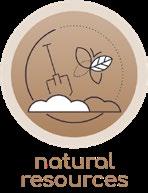
For the first time, ‘Sustainable Livelihoods’ was added as its own principle. This realignment will ensure Better Cotton’s Principles and Criteria remain an effective tool in delivering continuous improvement leading to field-level sustainability impact, and it addresses challenges and lessons learnt from the past.
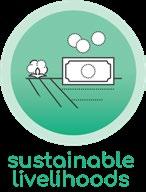
Defining ‘Climate Change Mitigation and Adaptation’ as a cross-cutting priority rather than a standalone principle enables Better Cotton Farmers to embed our Climate Approach more effectively across all environmental, social and economic aspects of sustainability. Additionally, the P&C explore regenerative agricultural practices, which will go a long way towards restoring farmland and having measurable impacts on the environment. Minimising soil disturbance, crop rotations, cover cropping and water efficiency are all included.

Changing the Story for Decent Work

The revised P&C have particularly strengthened our approach to social and economic wellbeing, with two principles devoted to working conditions and income, and the cross-cutting priority of ’Gender Equality’ seeking to uplift and protect women across all areas.
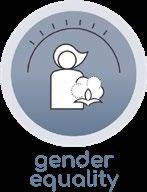
Within our decent work framework, we have now moved towards an ‘assess and address’ approach that treats producers and farming communities as partners in improving practices and protection systems. This approach places new emphasis on supporting and investing in field-
level systems and stakeholder collaboration to prevent, mitigate, identify and address any issues that arise. We have already seen tangible improvements in partners’ ability to proactively identify vulnerabilities and seek the support they need.
Complementing the ‘Decent Work’ principle is ‘Sustainable Livelihoods’ – enshrining Better Cotton’s commitment to lifting farming communities out of poverty and helping them build resilient livelihoods that will sustain them through the unpredictability of growing seasons. With more than 90% of cotton farmers considered smallholder farmers and many of them living in areas where poverty is a widespread challenge, it’s essential that their livelihoods are given just as much attention as the land they farm on.
Delivering on our Commitment to Continuous Improvement

This revision took roughly 18 months and included various stakeholder consultations. P&C v3.0 will come into effect from the start of the 2024/25 cotton season. The periodic review of our farm-level standard is in line with ISEAL’s Codes of Good Practice for voluntary standards.
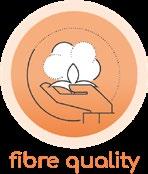
21
The Better Cotton Network
Programme Partners & Field Level Staff 2021-22 Secretariat Staff
The Better Cotton network spans the entire cotton sector. Farmers, ginners, spinners, suppliers, manufacturers, brand owners, retailers, civil society organisations, agricultural experts, donors and governments all make up the Better Cotton network and all play their part in contributing to a more sustainable future for cotton.
Achieving measurable change over the next decade will require continued collaboration and commitment from the entire Better Cotton network, and we are excited to keep on strengthening our partnerships in the years to come.
52,100
5,939 Field Facilitators
55
Strategic and Programme Partners
163 Full Time Employees
2,563 Members
Total Members
At year end, 2022.
Number of Full-Time Employees per Country 45
325
2,171 Suppliers and Manufacturers Retailers and Brands
34 Civil Society Organisations
17 Producer Organisations
16 Associates
11,234 Non-Member Better Cotton Platform Users
12% Increase of FROM 2021
* The majority of staff in China are employed by Mian Feng Da, a separate legal entity. At the end of March 2023, there were 11 full-time equivalent (FTE) staff employed by Mian Feng Da.
** Staff in Pakistan are employed by BCI Pakistan, a separate legal entity. At the end of March 2023, there were 29 full-time equivalent (FTE) staff employed by BCI Pakistan
1 Approximation
22
UK Switzerland India
USA
Brazil Sweden Kenya
Faso Mali Netherlands
Pakistan** China*
Mozambique
Burkina
529 Producer Unit Managers
Turkey 36 56 1 1 5 3 2 3 3 2 1 1 1 2 Uzbekistan
Lead Farmers¹
Ivory Coast 1
Governance and the Better Cotton Council
The Better Cotton Initiative
Better Cotton Initiative, trademark registered as Better Cotton, is a not-for-profit initiative founded in July 2009 and established in Switzerland as an association under Article 60 et seq of the Swiss Civil Code in Canton Vaud. Its registration was later moved to Canton Geneva in 2011.
Better Cotton is registered on the Registre du Commerce. The head office is in Chemin de Balexert 7-9, 1219 Châtelaine, Geneva.
Better Cotton has offices and representations in the countries listed in the table below. It also conducts activities, via local partners, in a range of other countries.
Executive Group and Leadership Team
Better Cotton Offices Countries with Better Cotton Representation
Switzerland Pakistan
United Kingdom United States
China Brazil
India Turkey
Sweden
Uzbekistan (since July 2023)
Mozambique
Burkina Faso
Mali
Uzbekistan (prior July 2023)
Leadership
- includes the Executive Group and the heads of function
23
Name Title Location Date Appointed to Current Role Date Appointed to Leadership Team Start Date at Better Cotton Executive Group Alan McClay CEO Geneva 28.09.2015 28.09.2015 28.09.2015 Lena Staafgard COO Lund 01.04.2017 01.11.2011 01.08.2010 Damien Sanfilippo Senior Director of Implementation Geneva 01.08.2021 01.03.2014 01.03.2014 Alia Malik Senior Director of Data and Traceability London 01.08.2021 23.04.2018 23.04.2018
Paula Lum-Young Bautil Director of Membership and Supply Chain Geneva 01.08.2021 01.01.2021 29.09.2014 Chelsea Reinhardt Director of Standards and Assurance London 01.08.2021 01.01.2021 15.08.2017 Rebecca Owen Director of Fundraising London 01.08.2021 01.01.2021 03.12.2019 Eva Benavidez Clayton Director of Communications London 01.08.2021 01.01.2021 09.11.2015 Siobhain Coburn* Director of Finance and Operations Geneva 01.08.2021 01.01.2021 01.10.2016 Corin Wood-Jones Director of
Projects Head of China Representative Office Geneva 01.08.2021 29.12.2021 01.01.2021 03.06.2013 / 10.03.20201
Team
Special
1 Left and re-started at Better Cotton
*The Director of Finance and Operations left in May 2023 and was replaced by Graham Sutherland from August 2023.
Better Cotton works with a diverse range of stakeholders across the cotton supply chain to achieve its mission. Better Cotton aims to promote measurable and continuing improvements for the environment, farming communities, and cotton-producing areas’ economies.
Better Cotton’s future is shaped by our Council, the elected board that helps drive cotton towards its truly sustainable future. A global group of secretariat staff, led by the Better Cotton Executive Group and Leadership Team, manage day-to-day operations and act as the conduit between Council decision-making and ground-level action.
The Better Council Structure
The Better Cotton Secretariat is responsible for managing the Membership Association.
During 2022, Better Cotton Council decided to change the financial year-end from 31 December to 31 March, to align with the cotton season and streamline the joint delivery of field funding for Better Cotton and the Growth and Innovation Fund (GIF). As a result of this adjustment, the current set of Financial Statements covers the 15-month period, from 1 January 2022 to 31 March 2023.
The Better Cotton Council
The Better Cotton Council is a multi-stakeholder board mandated by the full membership through the organisation’s General Assembly. The Council is formed among the Better Cotton Members through elections and appointment. The Council sits at the centre of the organisation and is responsible for our strategic direction. Together, Council Members shape the policy that ultimately helps to fulfil our mission: to help cotton communities survive and thrive, while protecting and restoring the environment.
Our Council also establishes any groups or committees that could help achieve our aims. There are three permanent committees in place: the Executive, Finance and Governance Committees. There is also a Nominations Committee established during each election round to oversee fair and transparent elections.
Council Committees 2022
Executive Committee
This committee consists of Council Officers: the Chair, Vice-Chair, Secretary and Treasurer, who are elected from among the Council members.
Members: Marc Lewkowitz (Chair), Gerson Fajardo (Vice-Chair), Arvind Rewal (Secretary) and Amit Shah (Treasurer)
Finance Committee
Council members as well as external experts (when required) make up this committee. The committee recommends the approval of the budget and annual financial statements to the Council. In addition, the committee regularly reviews Better Cotton’s financial outlook and policies.
Members: Pierre Chehab, Hamish McIntyre, Gerson Fajardo, Amit Shah, and Kees Kempenaar (external)
Governance Committee
This committee considers issues of governance and structure and makes recommendations to the Council on any necessary changes, including revisions of the statutes and by-laws so that Better Cotton maintains a high standard of good governance, appropriate for a multistakeholder initiative of its size, operations and reach.
Members: Rajan Bhopal, Pierre Chehab, Bob Dall’alba, Kevin Quinlan, and Arvind Rewal.
24
Name of Council Member Organisation Status Start of Mandate End of Current Mandate Member Category Keith Tyrell (until June 2022), then Rajan Bhopal PAN UK Elected 03.2021 06.2024 Civil Society Tamar Hoek Solidaridad Co-opted 06.2022 06.2026 Civil Society Pierre Chehab LDC Co-opted 06.2021 06.2024 Suppliers and Manufacturers Ashok Hegde OLAM Agri Elected 06.2022 06.2026 Suppliers and Manufacturers Gerson Fajardo Walmart Co-opted 06.2022 06.2024 Retailers and Brands Liz Hershfield J. Crew Co-opted 02.2023 06.2026 Retailers and Brands Arvind Rewal IKEA Elected 06.2022 06.2026 Retailers and Brands Robert Dall'alba Auscott Elected 06.2022 06.2026 Producer Organisations Marc Lewkowitz SUPIMA Elected 03.2021 06.2024 Producer Organisations Shahid Zia RBDC Co-opted 08.2021 06.2024 Producer Organisations Kevin Quinlan Independent Co-opted 02.2023 06.2026 Independent Amit Shah Independent Co-opted 06.2024 Independent
Nominations Committee
This committee is set up around each Council election period to oversee elections and the cooptation process.
Members: Ashok Hegde, Tamar Hoek, Marc Lewkowitz, and Arvind Rewal
Strategy Steering Committee
This is an ad hoc committee convened by the CEO to oversee the 2030 Strategy process.
Members: Ashok Hegde, Liz Hershfield, Kevin Quinlan, Shahid Zia.
Highlights of Council Decisions in FY 2023
• Approved the launch of the country programme in Uzbekistan with the condition that no licences would be granted before 2023, and Council can step in to block the licensing or put a hold on the programme if the need arises.
• Endorsed the opening of a branch office in Uzbekistan
• Approved the 2021 AOP Report and Financial Statements.
• Approved the change of year end to 31 March and 15-year FY from 1 January 2022 to 31 March 2023.
• Approved and agreed with the proposed governance work
• Approved the Safeguarding Policy, as a step towards mitigating external operational risks related to safeguarding for Better Cotton,

and approved the Complaints policy which allows for Council oversight of the process including ad-hoc committee formation for severe complaints.
• Endorsed the direction of the developing Africa Strategy.
• Approved the Chain of Custody direction with segregation and controlled blending
• Called an extraordinary General Assembly To facilitate the registration process at the Geneva Registry of Commerce, the Council agreed to second half of November, in order to grant signatory rights to the Chair, the Treasurer and the Executive Group.
• Approved the four remaining Impact Targets: Soil Health, Women’s Empowerment, Pesticides and Sustainable Livelihoods.
• Approved an average increase in membership fee levels of 7.2% (with adjustments in membership categories from 2% to 10%) and a 19% increase in BCP fees from EUR 500 to EUR 595.
• Approved the National Organisation Agreement with Pakistan.
25
Photo Credit: Rehab ElDalil/UNIDO Egypt
Council Composition
In June 2022,
• Better Cotton welcomed Rajan Bhopal of PAN UK as Council member who replaced Keith Tyrell.
• Bob Dall’Alba (Auscott), Arvind Rewal (IKEA), Ashok Hegde (OLAM Agri) were elected to Council in June 2022.
• The Council said goodbye to Hamish McIntyre (Cotton Australia), Cecilia Tiblad-Berntsson (H&M), Pathik Patel (Basil Commodities), Ebru Gencoglu (Adidas) and Isabelle Roger (Solidaridad).
In September 2022, RS Bala (Anandi Enterprises), passed away suddenly. In the same month, Council agreed to the following appointments until June 2026:
• Co-opt Tamar Hoek, representing Solidaridad, in the Civil Society category
• Appoint Amit Shah for a final term as an independent Council member
• Appoint Kevin Quinlan as an independent Council member
• Co-opt Liz Hershfield, representing J.Crew Madewell in the Retailer and Brand category
Council Elections 2022
Bob Dall’Alba (Auscott), Arvind Rewal (IKEA), Ashok Hegde (OLAM Agri) were elected to Council in June 2022. The next elections are scheduled for 2024 and members from all categories will be invited to apply. Learn more about the Council.
Affiliate Legal Entities
Name of Entity Legal Structure Created Location
Better Cotton Initiative (BCI) trademark registered- Better Cotton

Swiss Association under Arti-cle 60 et seq of the Swiss Civil Code
2009 Geneva, Switzerland
Better Cotton Initiative Shanghai Representative Office China
Resident Representative Office of a Foreign (Region) Enterprise
Better Cotton Initiative India Branch Office established with the Reserve Bank of In-dia's ("RBI") permission.
2012 Shanghai, China
November 2015 (began activities in 2016)
New Delhi, India
The financial statements within this report include the branches in China and India, and all activities of the Association. Better Cotton Initiative Pakistan and BCI Growth and Innovation Foundation (GIF) are independent Entities. Transactions between the entities are disclosed as related parties.
Related Parties
Name of Entity Legal Structure Created Location
BCI Growth and Innovation Foundation (GIF)
A Foundation established by Charter in Geneva in 2016.
Better Cotton Initiative Pakistan Established on 23 Jun 2017. Its license to operate as a local NGO was granted in April 2021.
2016 Geneva, Switzerland
2017 (activities commenced in 2018)
Lahore, Pakistan
26
Photo Credit: Better Cotton/Carlos Rudiney
Related Parties
Better Cotton Growth and Innovation Fund
The Better Cotton Growth and Innovation Fund (Better Cotton GIF or the Fund) was established by Charter in Geneva in April 2016 as a Swiss Foundation. Its three board members are the Better Cotton association CEO, who reports to the Better Cotton Council, the Chief Operating Officer and the Senior Director of Programmes. Better Cotton Association allocates resources, including employee time, for the Foundation’s activities as it has no employees or a separate location.
The Better Cotton GIF’s investments are guided by two advisory committees: The Buyer and Investor Committee (BIC) and the multi-stakeholder Field Investment and Innovation Committee (FIIC). Better Cotton allocates resources, including employee time, to the Foundation’s activities, as the Foundation has no employees or independent registered address. Previously, fund management was outsourced to IDH, The Sustainable Trade Initiative, one of Better Cotton’s key strategic partners. At the end of their term as the fund manager, on 31 March 2022, Better Cotton took on those fund management responsibilities.
The relationship and legal framework between GIF and Better Cotton were formalised through a donation agreement signed on 6 April 2023.
Better Cotton Initiative Pakistan
Better Cotton Initiative Pakistan is an independent legal entity established in June 2017. A board of five members govern the entity, one Board Member who is one of the Better Cotton Executive Directors.
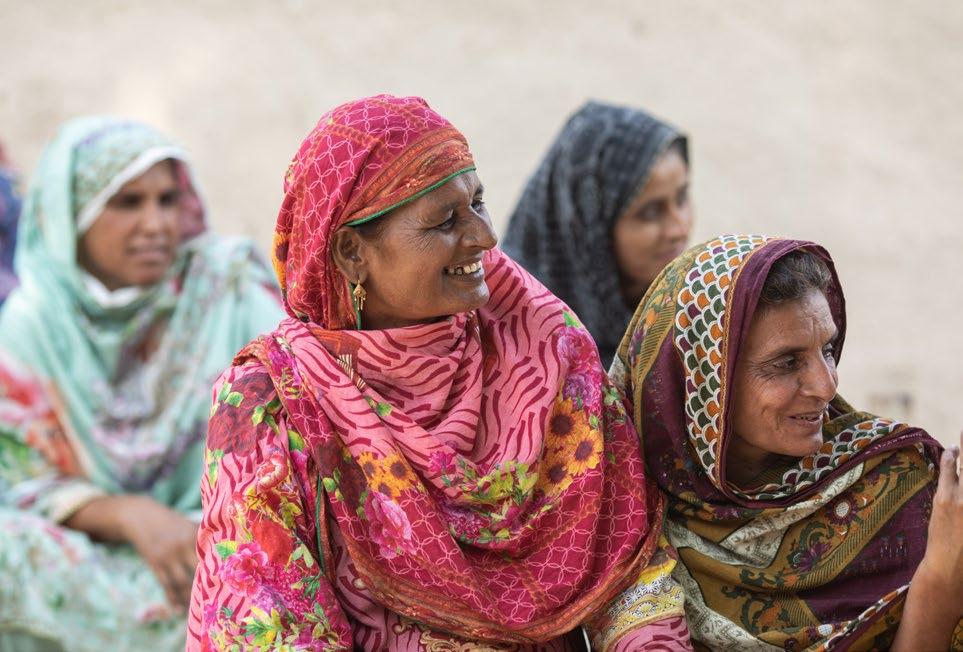
Its executive management includes the Better Cotton Regional Director for Pakistan operations. This entity received a licence to operate as an international NGO in Pakistan in April 2021.
A collaboration agreement existed to implement the Better Cotton Standard System up until September 2022. The partnership between BCI Pakistan and Better Cotton then changed as of 1 October 2022. It was formalised through a National Office Agreement (NOA). The NOA is a multi-year Donor Agreement based on an annual budget, which allows BCI Pakistan to use the Better Cotton brand and sets out the responsibilities of both parties. All the local Pakistan activities are delivered via this entity. Staff working in Pakistan are employed via BCI Pakistan.
Better Cotton’s Approach to Risk Management
Based on ISEAL Guidance and industry best practice, Better Cotton has built in a risk assessment, recording and management process that is led by a cross-functional working group. Risks are periodically assessed and reported to management and Council. The risk management process informs the annual planning process, which includes mitigation strategies for organisational risk.
BETTER COTTON ACTIVITIES
• Stewardship of the Better Cotton Standard System
• Capacity building and training
• Assurance and licensing
• Chain of custody, including management of the Better Cotton Platform
• Monitoring, evaluation and learning
• Membership services including member claims and communications
• Research
• Fundraising and donor management
27
27
Photo Credit: Better Cotton/Khaula Jamil
Complaints, Safeguarding and Whistleblowing
In September 2022 Better Cotton revised its Member Grievance procedure and implemented a more comprehensive Complaints Policy and Procedure which was launched on the Better Cotton website alongside our Safeguarding and Whistleblowing Policies.
The new Complaints Policy is ISEAL code compliant. It provides an easy way for anyone who engages with Better Cotton activities, people or programmes to raise a concern relating to any aspect of Better Cotton and its activities, including third parties with a direct relationship with Better
Cotton. Better Cotton has appointed a new team of focal points for each function and country who are responsible for assessing and resolving any concerns raised.
The data in the annual report provides an overview of total admissible complaints and incidents received between April 2022 and the end of March 2023, through the safeguarding, whistleblowing and complaints mechanisms.
We processed 32 complaints including seven that were received prior to the launch of the Complaints Policy
in September 2022. We received one whistleblowing incident and two safeguarding incidents, all of which were investigated and resolved.
The new Complaints Policy provides a valuable tool for Better Cotton to gather additional feedback and gain organisational learnings. In the first year of implementation we received a higher number of complaints in Pakistan than in other countries. However, this does not necessarily equate to a higher number of issues in Pakistan, and could be due to a number of potential factors, such as greater
awareness of Better Cotton within farming communities in the country. As the process matures and we promote greater awareness of the new policy we will continue to increase our understanding of potential trends and deliver continuous improvement.
28
Type of Incident Number Complaints 32 Whistleblowing 1 Safeguarding 2 Table 1: Overview of complaints, safeguarding and whistleblowing incidents Country Number of Admissable Complaints Percentage Pakistan 21 66% India 3 10% Spain 2 6% China 2 6% Uzbekistan 1 3% Global 1 3% Bangladesh 1 3% Italy 1 3%
per country Category Number of Admissable Complaints Percentage Membership 4 13% Programmes 8 25% Programmes Decent Work 17 53% Supply Chain 1 3% IT 1 3% Other 1 3%
per category
Table 2: Breakdown of admissible complaints
Table 3:
Breakdown
of admissible complaints
Financials
Summary of Audited Accounts
This financial information summarises the statutory financial statements for 2022-23. In 2022, the Better Cotton financial year end changed from December 31 to March 31, as a result of a decision of Better Cotton Council, to align with the cotton season and also streamline the joint delivery of field funding for Better Cotton and the Growth and Innovation Foundation.
As a result of this transition, the set of Financial Statements covers a 15-month period. Better Cotton fits the definition of a charitable non-profit organisation. It raises its income from members and the public, receives donations from grant-making Foundations, governmental organisations and provides services that benefit the general public.
The use of the VBF is restricted and aside from donations to the Better Cotton GIF, a portion of it is utilised by Better Cotton as follows:
• Performing assurance activities around the effectiveness of the Better Cotton Standard.
• Contributing to costs of implementation by our strategic partner, Aid by Trade Foundation (AbTF).
• Covering GIF management costs and the rest of the VBF is donated to the Foundation that is funding the field-level programmes.
Other restricted funding includes the grants and donations from other donors for specific projects.
Better Cotton prepares the Financial Statements under Swiss GAAP Core 1-6 and FER 21 “Accounting for charitable non-profit organisations” that aims to increase the significance and comparability of the reporting of charitable non-profit organisations in Switzerland, and comply with the Swiss Code of Obligations. The use of Swiss GAAP FER improves the transparency of the allocation of the resources spend on behalf of our members and donors or partners.
Financial Position
Statement of Operations
By 31 March 2023, our membership base exceeded 2500 members, and with more than 11,000 Better Cotton Platform users. Revenues from membership and nonmember suppliers using the Better Cotton Platform constitute the primary source of our unrestricted operating income.
The Retailers and Brand Members pay a Volume Based Feed (VBF). This fee is calculated based on the total Better Cotton Claim Units (BCCUs) recorded in the Better Cotton Platform (BCP). This corresponds to the volume of Better Cotton sourced by Retailer and Brand Members.
All VBF is used to fund farmer support, the majority in donations to the Better Cotton Growth and Innovation Fund (Better Cotton GIF or the Fund) which are then allocated to field-level projects. This relationship and the legal framework between GIF and Better Cotton was formalised through a donation agreement signed on 6 April 2023.
Better Cotton 2022-23 Income
Source for Operating Income
29
Partnership, Events & Training Income Project Credibility Income Grants From Private / Public Donors Membership and Better Cotton Platform Access Fees Restricted Income (Used for GIF Projects & Field Funding) Restricted Income (Donors) Restricted Income (Project Credibility) Unrestricted Income
Restricted/Unrestricted Income €”000s 2022-23 31 Mar 2023 2021 31 Dec 2021 Short-Term Assets 42,504 28,830 Long-Term Assets 174 84 TOTAL ASSETS 42,678 28,914 Short-Term Liabilities 18,742 10,806 Long-Term Liabilities 20 161 Funds: Income - Restricted 12,959 9,154 Organisational Capital 10,957 8,793 TOTAL LIABILITIES AND CAPITAL 42,678 28,914
€”000s 2022-23 15-month 2021 12-month Income* 48,555 29,535 Operating Expenses (46,184) (26,504) Operating Result 2,371 3,031 Net Financial Result (207) (68) ANNUAL RESULT 2,164 2,963 Change in Funds 3,805 210 Annual Result Before Allocations 5,969 3,173 Change in Restricted Funds (3,805) (210) Allocation to Earned CapitalUnrestricted (2,164) (2,963) Annual Result After Allocation to Capital -*of which is restricted 31,312 17,776
8% 51% 5% 36% 2% 10% 16% 72%
29
Better Cotton 2022-23 Expenditures
Field Level
Better Cotton donates the majority of the VBF to the Better Cotton GIF. The recognition of the VBF is when it is utilised. VBF is utilised for three main purposes in Better Cotton: we use some of this income source to cover the costs of field-based assurance and data collection, and some is used to cover the cost of better Cotton GIF management. The remainder of the income is recognised when it is donated to the Fund. The Better Cotton GIF then awards grants to Better Cotton Programme Partners.
Assurance Programme
An effective assurance system is an essential part of any sustainability programme. Assurance refers to the measures put in place to verify that something meets a certain performance level. The Better Cotton Assurance Programme verifies that farms and farmer groups meet all the core requirements of the Principles and Criteria before they can be licensed to sell Better Cotton.
Better Cotton’s approach to assurance and licensing combines assessments by approved third-party verifiers along with assessments by trained Better Cotton staff members, support visits by Programme Partners, and regular self-assessments by producers themselves.
Stewardship of the Standard
In line with codes of good practices for voluntary standards, the Better Cotton Standard is continually reviewed and updated to ensure it addresses all pillars of sustainability, continues to meet best practice, is effective and locally relevant, and aligns with Better Cotton’s 2030 Strategy.
Demand
The Better Cotton Chain of Custody (CoC) connects supply with the Demand. From the farmers who produce it to the companies that source it. Our CoC ensures that the volumes of Better Cotton claimed by Better Cotton Retailer and Brand Members does not exceed the volumes licensed.
Assurance
The amount due to the Better Cotton GIF is presented as short-term liability to farmer support in the statement of financial position. The accrued income has also been recognised inducing an increase of the restricted Income in the Statement of Operations.
Operational income continued to grow in 2022 as our membership and Better Cotton Platform user base increased. Operating expenses remained well managed. Besides the 15-month activities, the increase is supporting the organisational growth, the 2030 strategy and development of traceability. Adjustments on salaries were made in the countries facing hyperinflation. The increase in the contributions to partners is attributable to the implementation of the new partnership framework between the local strategic partner and Better Cotton for our operations in Pakistan in October 2022, and to a change in the accounting that recognizes the accrued donation to the GIF following the formalization of Better Cotton obligation to donate significant part of VBF to GIF.
Financial Highlights 2022-23
For the transition year following the change of year end from 31 December to 31 March, the set of Financial Statements cover a 15-month period. The management is confident of the association’s continuity and therefore the valuation of assets and liabilities, and the determination of the results in the financial statements are done on a going concern basis.
Our financial position at the close of 2023 remain healthy with a strong cash position. The receivables remain well-managed. The increase of the receivables and of the VBF closing balance is mainly attributable to the change of year end as a significant portion of the VBF has been invoiced in the last quarter of the financial year (February/March), and to be used for the next cotton season that starts in April 2023.
In 2022, we started to invest to develop the Better Cotton (online) Platform to accommodate the new Chain of Custody Model the work will be completed in October 2023.
The unrestricted reserves for Better Cotton meet the reserves policy which is six months of the next year’s planned operational expenses, and will enable the organisation to navigate any challenges .
In November 2022, the Council has approved a minimal fee revision, for the membership and for the access to the Better Cotton Platform for non-members. The revised fees have taken effect from 1 April 2023, at the start of the new Financial Year.
Better Cotton continues expanding its operations in Uzbekistan. The registration of the branch office located in Tashkent was completed in July 2023.
30
In the 2021-22 cotton season, out of the 2.8 million farmers who received training, more than 2.2 million received a license to sell their cotton as Better Cotton.
Field Level 63% 8% 2% 10% 17%
30
Stewardship of the Standard Demand Governance, Admin, Fundraising and Communications
Expenditures Overview
Better Cotton and the Growth and Innovation Fund

The Better Cotton Growth and Innovation Fund (Better Cotton GIF) identifies and makes strategic investments in Better Cotton field-level programmes and innovations. It is one part of our capacity building programme. Next to the Better Cotton Standard System, field-level investments made through the Better Cotton GIF play an important role in enabling us to reach more farmers and train them on sustainable farming practices. The Better Cotton GIF is governed by two-multi-stakeholder committees – the Buyer and Investor Committee and the Field Innovation and Impact Committee – in partnership with Better Cotton Retailer and Brand Members, Better Cotton Civil Society Members and donors. Many smallholder farmers in the Better Cotton Programme are supported via grants from the Better Cotton GIF. GIF funding benefits Better Cotton Programme partners strengthening farmers’ capacity to adopt better practices consistent with the Better Cotton Principles and Criteria. The projects target any of five impact areas: soil health, women’s empowerment, climate change mitigation, pesticides, smallholder livelihoods. A smaller amount of funding is dedicated to innovative or research-based projects that show promise in the future of sustainable cotton farming. Following a rigorous review process of requested proposals, the
FIIC awards grants to projects which align with the Fund’s annual priorities, long-term strategy and assessment criteria.
Each cotton season, Better Cotton-endorsed Programme Partners can apply for grants to support their field-level training and support programmes. In addition to the VBF paid by Retailer and Brand Members, the Better Cotton GIF receives donations from institutional donors and government agencies. We also encourage Programme Partners to invest directly in the projects they run through the Better Cotton GIF.
As part of Better Cotton’s 2030 Strategy, there is an aim to drive deeper change and achieve demonstrable farm-level impact while maintaining, and where possible continuing to, scale. The Better Cotton GIF has embarked on a new phase to better assist Better Cotton in achieving this.
Please note that the presentation combines income and expenditure for both the Better Cotton Initiative and the Better Cotton Growth and Innovation Fund. The Better Cotton figures have been re-based on a 12-month basis for comparison. The combined figures are for illustrative purposes only. They are not a detailed representation of the consolidated financial activities of the Better Cotton Initiative and the Better Cotton GIF, which are two separate legal entities.
Combined Income and Expenditure
Expenditure
31
Expenditure 2021 2022-23 Field-Level 17,932 23,470 Assurance 1,812 3,084 Stewardship of the Better Cotton Standard System 932 821 Driving Better Cotton Sourcing 2,316 3,673 Governance, Admin, Fundraising and Communications 3,641 6,666 TOTAL 26,633 37,713 Income 2021 2022-23 Membership Fees and Better Cotton Platform Fees 11,721 13,538 Volume-Based Fee (paid by Better Cotton Retailer and Brand Members) 14,090 22,944 Conferences and Workshops 141 147 Grants 2,133 2,585 TOTAL 28,085 39,214 (in thousands of euros)
Photo Credit: Better Cotton/Vibhor Yadav
Driving Better Cotton Sourcing Stewardship of the Better Cotton Standard System Assurance Field-Level 62% 7% 10% 6% 15% Income Grants Conferences and Workshops Volume-Based Fee (paid by Better Cotton Retailer and Brand Members) Membership Fees and Better Cotton Platform Fees 45% 38% 16% 1%
67% 14% 9% 3% 7% 2022-23 2021 2021 42% 50% 7% 0% 18% 62% 8% 10% 2% 18% Governance, Admin, Fundraising and Communications 35% 58% 7% 2022-23
31
Financial statements for the Better Cotton Initiative and the Better Cotton Growth and Innovation Fund are available by contacting membership@bettercotton.org.
Donors and Partners 2022
We would like to thank the following donors and partners who, by supporting Better Cotton are driving positive change in the cotton sector:
Donors and Funders
Better Cotton
International Social and Environmental Accreditation and Labeling (ISEAL), supported by Switzerland State Secretariat for Economic Affairs (SECO)
Deutsche Gesellschaft für Internationale Zusammenarbeit (GIZ)
International Finance Corporation (IFC)
Strategic and Programme Partners
Better Cotton Growth & Innovation Fund
IDH, The Sustainable Trade Initiative Laudes Foundation
Australia
Cotton Australia – Strategic Partner, Benchmarked Programme
Brazil
The Associação Brasileira dos Produtores de Algodão (ABRAPA) – Strategic Partner, Benchmarked Programme
China
CottonConnect China
Huangmei County Huinong Scientific and Technology
Planting and Breeding Cooperative
Shandong Binzhou Nongxi Cotton Professional
Cooperative
Songzi Nanwuchang Grain Cotton Oil Specialised
Cooperative
Egypt
Modern Nile Cotton
ALKAN
Greece
ELGO-DOV – Strategic Partner, Benchmarked Programme
India
Arvind
Basil
CSPC
ACF
AFPRO
AKRSPI
CC
Deshpande
DSC
Lupin
SIPL
WWF
KKF
Mahima
UGSSS
Vardhman
Welspun
Israel
The Israel Cotton Production and Marketing Board (ICB)
– Strategic Partner, Benchmarked Programme
Kazakhstan
Louis Dreyfus Company
Mali
Compagnie Malienne pour le Developpement des Textiles (CMDT)
Mozambique
SANAM
SAN-JFS
FESAP
Sam Mutuali
Multiple African Countries
CmiA – Strategic Partner, Benchmarked Programme
Pakistan
The Centre for Agriculture and Bioscience International
Pakistan
The Central Cotton Research Institute
CottonConnect Pakistan
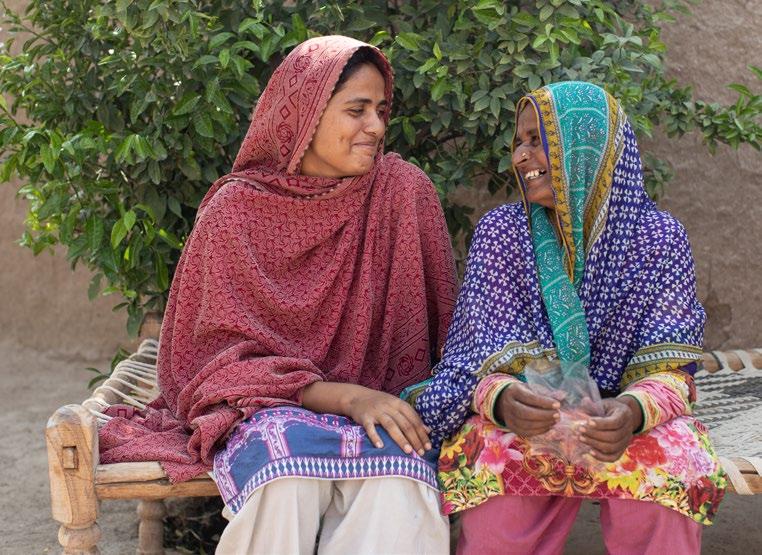
Rural Business Development Consultancy
The Rural
Education and Economic Development Society Pakistan
Sangtani Women Rural Development Organization
WWF Pakistan
South Africa
Cotton South Africa
Tajikistan
Sarob
Turkey
Canbel Tarim Urunleri Danismanlik Egitim Pazarlama San. Tic. Ltd. Sti,
GAP Regional Development Administration
İyi Pamuk Uygulamaları Derneği (IPUD)
WWF Turkey
United States
Allenberg (Louis Dreyfus)
Calcot
Cargill
Jess Smith & Sons
Olam
Plains Cotton Cooperative Association (PCCA)
Quarterway Cotton Growers
Staple Cotton Cooperative Association
Supima
32
32
Photo Credit: Better Cotton/Khaula Jamil
Outlook to 2023-24
As Better Cotton progresses our work to bring the 2030 Strategy to fruition, we are going even further to deepen the positive impact that our programmes around the world have on farming communities and the environment in which they live.
We know there is more to be done to address farmers’ income, which is why Sustainable Livelihoods was added to our new Principles & Criteria, and we are creating a distinct ‘Sustainable Livelihoods Approach’ that outlines how we will work with Programme Partners to deliver effective support that improves living standards in farming communities. The transition to the Principles & Criteria v3.0 has begun, and it will be in effect for the 2024/25 cotton season. To have the most meaningful impact, we are developing flexible strategies that are targeted for different regions and farm sizes.
The regulatory environment in sustainability is changing. At Better Cotton, we welcome any legislation that supports a green and just transition and recognises all progress on impact, including at field level. In this changing context, we are evolving to meet both government and market needs, and several big and exciting projects coming up will contribute to this.
Our Traceability Solution will start reshaping how Better Cotton flows through the supply chain. New Chain of Custody models that track physical Better Cotton through the supply chain will be introduced in October 2023, followed soon after with the full launch of the
Better Cotton Traceability Solution.
This will be accompanied by an enhanced Better Cotton Platform, and an updated Claims Framework. The Traceability Solution will allow smallholders to continue accessing increasingly regulated markets, and it will lay the foundation for increased remuneration to farmers for their sustainably grown cotton.
Over the coming months, we will begin implementing the early stages of an ‘impact marketplace’, where farmers will be able to receive more investment based on sustainability outcomes.

Our task for the coming year remains clear and constant: We want to deepen our impact in cotton farming communities. Our initiatives all seek to help farmers nurture their land and grow high quality fibre while earning more sustainable incomes. We believe that our Traceability Solution, new approaches to fundraising and other programmes will contribute to achieving these goals.
As always, the next year will be a busy one. We hope to see you online at our Programme Partner Meeting or inperson at the 2024 Better Cotton Conference. We’ll have plenty of progress to share.
33
33
Photo Credit: Better Cotton/Morgan Ferrar

34 bettercotton.org
better-cotton-initiative bettercottonorg
BCICotton
Photo credit: Better Cotton / Carlos Rudiney


 Photo Credit: Better Cotton/Seun Adatsi.
Photo Credit: Better Cotton/Seun Adatsi.





 Photo Credit: Better Cotton/Katrina McArdle
Photo Credit: Better Cotton/Katrina McArdle






























